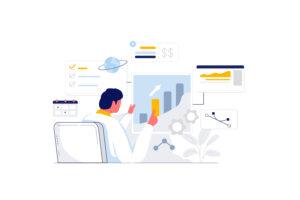We have already dealt with debtor analysis here, therefore today we will deal in more detail with the study of debts to be recovered with Artificial Intelligence, which represents a complementary and necessary activity in order to allow companies to implement the best strategies to achieve their objectives.
Each debt differs from the other in some parameters, such as its value, so we could have debts that refer to very large sums, as well as to smaller figures. Normally, companies that deal with debt collection and have a recovery target tend to work with higher-value debts, to have a better chance of reaching their goal in the shortest possible time and, at the same time, minimize the costs. The latter can vary greatly depending on whether you focus on the recovery of a single debt of 1 million euros or 100 debts of 10,000 euros.
We have already seen how the first step to be taken in order to set up an optimal recovery campaign is to use Artificial Intelligence to analyse the propensity of debtors to repay their debt, to eliminate spontaneous segments and focus on debtors who more likely to normalize their position and whose debt value will turn out to be higher.
But debt collection activities are complex and must take into consideration multiple factors, such as the fact that a debtor who is highly inclined to pay off his debt may be willing to pay only a part of it.
It often happens that in a list of debtors many do not have the possibility (or desire) to repay their debt in its entirety, so it becomes absolutely necessary for the company that deals with the recovery to know in advance the expected value of each debt , that is the sum that is likely to be recovered from that debt and this is possible by using Artificial Intelligence to generate predictive models of value.
Taking advantage of these models, it becomes very simple to have an analytical vision based on the data of one’s processing list, for example we could know that on two debts with a high probability of recovery of €10,000 and €7,000 respectively, the debtor of the first will be willing to repay only the half, while the debtor of the second 90%. In this way, the company that deals with the recovery will have the possibility to estimate how much it can recover from each of them and decide to work on the first one later and concentrate instead on the second one.

Are you wondering how it is possible to generate predictive models of value with just a few clicks and apply them to your debt collection campaign?
Thanks to BigProfiles and its AI Platform it is possible to create predictive models of value in a very short time and without any knowledge in terms of coding or data science. Furthermore, thanks to an intuitive and user-friendly interface, companies will be able to analyze their list of debtors and their debts in advance and implement the best strategies to achieve their goals, not only in terms of the number of debts paid, but also of total recovered economic value.
